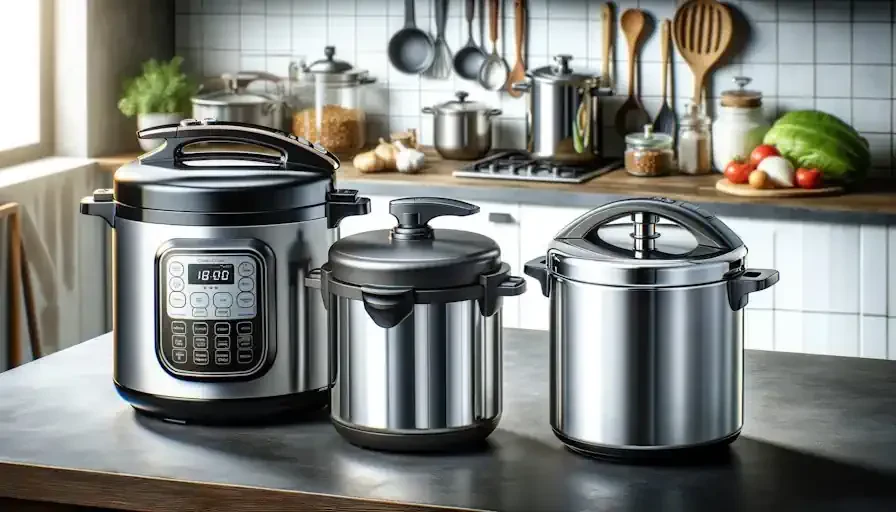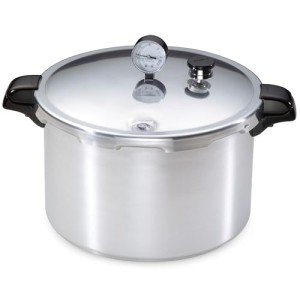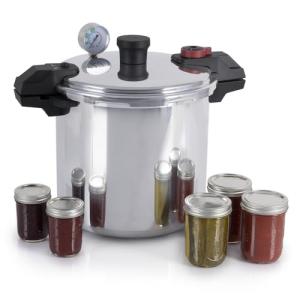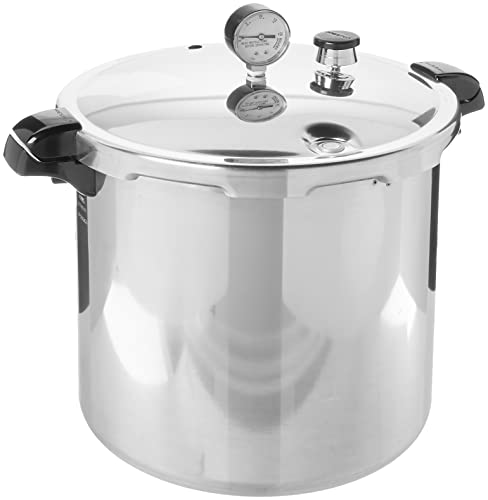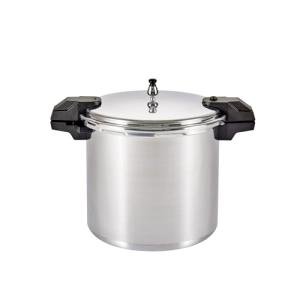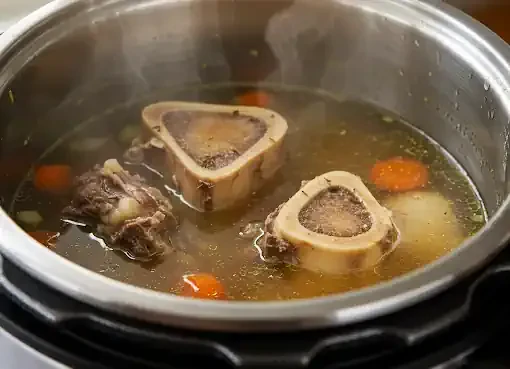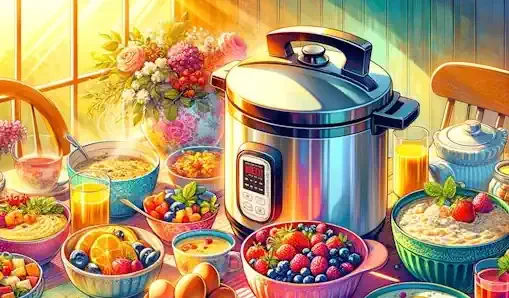Pressure cookers have experienced a notable resurgence in modern kitchens due to their efficiency, speed, and versatility in cooking a wide range of dishes. Once considered a relic of the past, pressure cookers have made a comeback as contemporary cooks seek convenient methods to prepare meals without compromising on flavor or nutrition. With advancements in design and technology, modern pressure cookers offer enhanced safety features and user-friendly interfaces, making them an attractive addition to any kitchen arsenal.
Choosing the right material for a pressure cooker is crucial as it directly impacts its performance, durability, and safety. Stainless steel, electric, and aluminum are the primary materials available in the market, each with its own set of advantages and considerations. Stainless steel pressure cookers are renowned for their durability, resistance to corrosion, and ability to maintain flavor integrity. Electric pressure cookers provide convenience with programmable settings and automated features, making them ideal for busy households. However, aluminum pressure cookers are lightweight and offer rapid heating capabilities but may be prone to denting and scratching over time. Understanding the differences between these materials is essential for consumers to make an informed decision based on their cooking needs, preferences, and budget.
The purpose of this article is to provide consumers with an in-depth comparison of pressure cooker materials—stainless steel, electric, and aluminum—to aid them in making a well-informed purchasing decision. By exploring the unique characteristics, advantages, and potential drawbacks of each material, readers will gain a comprehensive understanding of what to consider when selecting a pressure cooker for their kitchen. Additionally, the article will highlight key factors such as safety features, cooking performance, maintenance requirements, and long-term durability to empower consumers to choose the best option that aligns with their individual cooking preferences and lifestyle. Ultimately, the goal is to equip readers with the knowledge and insights necessary to confidently invest in a pressure cooker that meets their needs and enhances their culinary experience.
Understanding the Materials
Stainless Steel
Stainless steel pressure cookers are highly favored for their robust characteristics and numerous benefits. They are renowned for their:
Characteristics and Benefits: Stainless steel pressure cookers are known for their durability and resistance to corrosion, stains, and rust. They do not react with acidic foods, making them ideal for cooking a wide range of dishes. Additionally, stainless steel retains heat well, ensuring even cooking and consistent results.
Durability and Longevity: Stainless steel pressure cookers are built to last. They withstand heavy usage and are less prone to dents and scratches compared to other materials. With proper care, they can serve you for years without losing their efficiency.
Ease of Cleaning and Maintenance: Cleaning stainless steel pressure cookers is a breeze. They are dishwasher safe and do not require special cleaning agents. Their non-porous surface prevents food particles from sticking, making them easy to wipe clean after each use.
Electric
Electric pressure cookers offer unparalleled functionality and convenience, making them a popular choice among modern households. They are known for:
Functionality and Convenience: Electric pressure cookers automate the cooking process, allowing users to set cooking times and pressure levels with the push of a button. They come with various presets for different types of dishes, simplifying meal preparation.
Features and Programmability: Electric pressure cookers are equipped with a range of features such as delayed start, keep warm function, and programmable settings for precise cooking control. Some models even have built-in sensors to monitor pressure and temperature, ensuring optimal cooking results.
Energy Efficiency: Electric pressure cookers are energy efficient, consuming less power compared to traditional stovetop models. They utilize electricity to generate heat, which is contained within the sealed cooking chamber, minimizing heat loss and reducing cooking time.
Aluminum
Aluminum pressure cookers are lightweight and known for their excellent heat conductivity. While they offer affordability and widespread availability, they also come with some potential drawbacks:
Lightweight and Heat Conductivity: Aluminum pressure cookers heat up quickly and distribute heat evenly, resulting in faster cooking times. Their lightweight construction makes them easy to handle and store.
Affordability and Availability: Aluminum pressure cookers are generally more affordable than stainless steel or electric models, making them accessible to a wide range of consumers. They are widely available in stores and online, making them a popular choice for budget-conscious shoppers.
Potential Drawbacks: Reactivity and Durability: Aluminum is reactive with acidic and alkaline foods, which can affect the taste and color of certain dishes. Additionally, aluminum pressure cookers are more prone to dents and scratches compared to stainless steel, potentially compromising their durability over time. Some users also raise concerns about the safety of cooking acidic foods in aluminum cookware due to potential leaching of aluminum into the food. However, many modern aluminum pressure cookers are coated with non-stick materials or anodized to minimize reactivity and enhance durability.
Performance Comparison
Cooking Efficiency
When comparing different pressure cookers, cooking efficiency is a crucial factor to consider, encompassing both speed and consistency, as well as the retention of nutrients and flavors.
Speed and Consistency: Pressure cookers are renowned for their ability to significantly reduce cooking times compared to conventional methods. However, the speed and consistency of cooking can vary between different models. High-quality pressure cookers maintain consistent pressure levels throughout the cooking process, ensuring uniform cooking and reliable results every time.
Retention of Nutrients and Flavors: Pressure cooking is known to preserve more nutrients in food compared to other cooking methods such as boiling or steaming. The sealed environment of pressure cookers helps to retain vitamins, minerals, and flavors, resulting in healthier and more flavorful meals.
Versatility
Versatility is another important aspect to consider when evaluating pressure cookers, encompassing their compatibility with various recipes and ingredients, as well as their multifunctionality and available cooking modes.
Compatibility with Various Recipes and Ingredients: The best pressure cookers are versatile enough to handle a wide range of recipes and ingredients, from soups and stews to grains, meats, and desserts. They offer flexibility in terms of cooking times and pressure levels, allowing users to adapt recipes to suit their preferences.
Multifunctionality and Cooking Modes: Many modern pressure cookers come equipped with multiple cooking modes and preset programs, expanding their versatility and making them suitable for different cooking tasks. These may include functions for sautéing, steaming, slow cooking, and yogurt making, providing users with endless possibilities in the kitchen.
Safety
Safety is paramount when using pressure cookers, and it involves various aspects such as pressure release mechanisms, built-in safety features, and long-term health considerations.
Pressure Release Mechanisms: Pressure cookers are designed with mechanisms to release excess pressure safely, preventing accidents and ensuring user safety. These mechanisms may include pressure release valves, pressure indicators, and locking systems that prevent the cooker from being opened until the pressure has been fully released.
Built-in Safety Features: High-quality pressure cookers are equipped with built-in safety features to minimize the risk of mishaps during operation. These features may include lid-locking mechanisms, automatic shut-off functions, and sensors that detect anomalies in pressure or temperature.
Long-term Health Considerations: While pressure cooking is generally considered a healthy cooking method due to its ability to retain nutrients, there are some long-term health considerations to keep in mind. It's essential to choose pressure cookers made from high-quality materials that are free from harmful chemicals such as BPA or lead. Additionally, proper maintenance and cleaning are important to prevent the buildup of bacteria and ensure the longevity of the cooker.
Practical Considerations
Budgetary Constraints
Considering budgetary constraints is essential when choosing a pressure cooker, weighing the initial investment against long-term value and evaluating the cost-effectiveness of each material option.
Initial Investment vs. Long-term Value: While some pressure cookers may have a higher initial cost, it's important to assess their long-term value. High-quality pressure cookers made from durable materials like stainless steel may have a higher upfront cost but can offer better longevity and performance, ultimately providing better value over time.
Cost-effectiveness of Each Material: Different materials used in pressure cookers come with varying price points. Stainless steel models tend to be more expensive upfront but offer excellent durability and longevity, making them a cost-effective choice in the long run. Aluminum pressure cookers are more affordable initially but may require replacement sooner due to their lower durability.
Kitchen Compatibility
Considerations regarding kitchen compatibility include evaluating space requirements, storage options, and compatibility with different cooktops.
Space Requirements and Storage Options: Assess the available space in your kitchen and consider the size of the pressure cooker. Some models may have a larger footprint or additional accessories, requiring more storage space. Look for pressure cookers with compact designs or stackable features to optimize storage in smaller kitchens.
Compatibility with Different Cooktops: Ensure that the pressure cooker you choose is compatible with your existing cooktop. While most pressure cookers are designed for use on traditional stovetops, electric pressure cookers are suitable for use with electric cooktops and may require specific voltage requirements.
User Experience
User experience plays a significant role in the satisfaction and usability of a pressure cooker, including factors such as ease of use, learning curve, and customer reviews.
Ease of Use and Learning Curve: Opt for a pressure cooker that offers intuitive controls and straightforward operation, especially if you're new to pressure cooking. Consider the available cooking modes, preset programs, and user-friendly features such as digital displays and one-touch buttons. Look for models with clear instruction manuals and online resources to assist with the learning process.
Customer Reviews and Satisfaction Ratings: Before making a purchase, research customer reviews and satisfaction ratings for the pressure cooker models you're considering. Pay attention to feedback regarding performance, durability, safety features, and overall user experience. Platforms like online retailers, cooking forums, and review websites can provide valuable insights from real users to help inform your decision.
Environmental Impact
Sustainability of Materials
Examining the sustainability of materials used in pressure cookers is crucial for understanding their environmental implications, considering factors such as production methods, longevity, and recyclability.
Environmental Implications of Stainless Steel, Electric, and Aluminum Production: The production of stainless steel, electric pressure cookers, and aluminum can have varying environmental impacts. Stainless steel production typically requires significant energy inputs and resources, but it is durable and recyclable, reducing the need for frequent replacements. Electric pressure cookers may require energy-intensive manufacturing processes, but their efficiency during use can offset this impact over time. Aluminum production is known to have high energy consumption and can generate greenhouse gas emissions, but aluminum is lightweight and recyclable.
Longevity and Recyclability: The longevity and recyclability of pressure cookers contribute to their overall sustainability. Stainless steel pressure cookers are known for their durability and can last for many years with proper care. Additionally, stainless steel is highly recyclable, reducing waste at the end of its lifespan. Electric pressure cookers may have shorter lifespans due to electronic components but can still be recycled. Aluminum pressure cookers, while less durable, are also recyclable, mitigating their environmental impact.
Energy Consumption
Assessing the energy consumption of pressure cookers is essential for understanding their overall environmental footprint and efficiency.
Impact of Electric Pressure Cookers on Energy Usage: Electric pressure cookers rely on electricity for operation, which can contribute to energy consumption. However, their efficiency in cooking can offset this impact by reducing overall cooking times and energy usage compared to conventional cooking methods. Additionally, some electric pressure cookers feature energy-saving modes and programmable settings to optimize efficiency.
Comparison of Energy Efficiency Among Different Models: When comparing energy efficiency among different pressure cooker models, factors such as insulation, cooking times, and heat distribution come into play. Stainless steel and aluminum pressure cookers typically rely on external heat sources, such as stovetops, which may vary in energy efficiency depending on the cooktop used. Electric pressure cookers, on the other hand, have built-in heating elements and temperature control, allowing for precise energy management. Considerations such as insulation quality and cooking presets can further influence the energy efficiency of pressure cookers across different models and brands.
Conclusion
Recap of Key Findings
Throughout this exploration of different pressure cookers, we've delved into various aspects including materials, performance, practical considerations, environmental impact, and more. We've learned about the characteristics and benefits of stainless steel, electric, and aluminum pressure cookers, as well as their respective advantages and drawbacks. We've also examined factors such as cooking efficiency, versatility, safety features, and energy consumption, providing a comprehensive overview of what to consider when choosing a pressure cooker.
Recommendations Based on Specific Needs and Preferences
Based on the findings presented, recommendations can be tailored to individual needs and preferences. For those seeking durability and long-term value, stainless steel pressure cookers may be the best option. Electric pressure cookers offer convenience and versatility, particularly for those with busy lifestyles or limited kitchen space. Meanwhile, aluminum pressure cookers provide affordability and lightweight construction, making them suitable for budget-conscious consumers or those prioritizing portability.
Emphasis on the Importance of Considering Factors Beyond Price Alone
It's crucial to highlight that the decision to purchase a pressure cooker should not be based solely on price. While affordability is a significant factor for many, it's equally important to consider factors such as performance, durability, safety features, and environmental impact. Investing in a high-quality pressure cooker that meets your specific needs and preferences can ultimately save you time, money, and frustration in the long run.
Encouragement for Readers to Explore Further and Make an Educated Decision for Their Kitchen Needs
As readers conclude their journey through the realm of pressure cookers, it's encouraged to delve deeper into research and exploration. Take the time to read reviews, compare features, and perhaps even test out different models if possible. By making an educated decision based on thorough consideration of all relevant factors, you can ensure that the pressure cooker you choose aligns perfectly with your kitchen needs and enhances your culinary experiences for years to come. Happy cooking!
